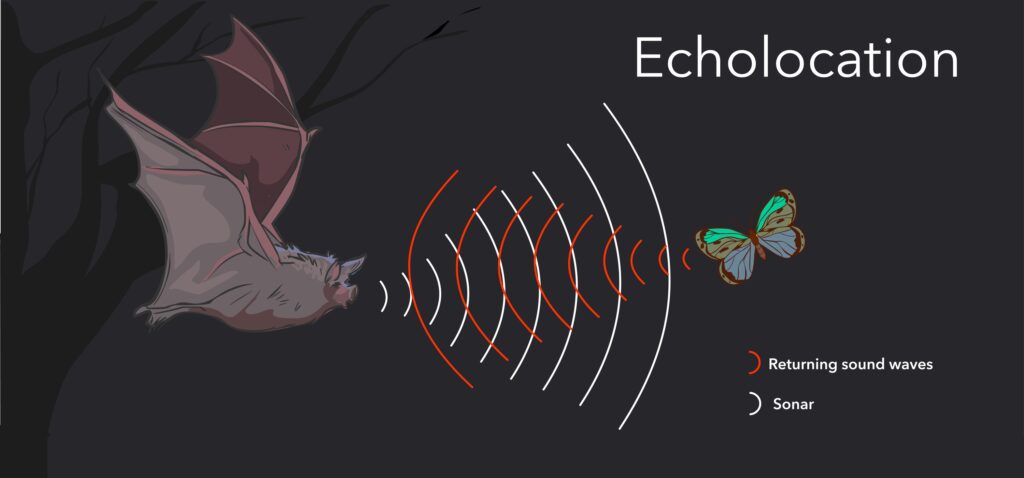There are many species around the world that use sound reverberation to better navigate their surroundings, including toothed and baleen whales like dolphins, porpoises, killer whales, sperm whales, gray whales, and rorquals. Even certain species of bird are hypothesized to use a type of sound navigation system. The ability to both emit ultrasonic sound waves and use the sound reverberations to map the environment is a biological, built-in system known as biosonar, which is also referred to as echolocation. Like the species of echolocating animals, microbats also use sounds to see.
Continue reading to learn more about echolocation in bats, including how bio-sonar works and why bats use it.

Microbats Have Echolocation Abilities
As discussed in many blogs prior, there are two primary species of bats: microbats (Megachiroptera) and megabats (Megachiroptera). Megabats are also known as fruit bats or old world fruit bats because they mainly eat the juices and nectar of fruits and flowers. Megabats do not retain echolocating abilities. However, some recent studies show that some might, like the Egyptian fruit bat. Because megabats do not prey on living organisms, they do not need to rely on flying accuracy and agility, so it makes sense that they would not have echolocating abilities.
Microbats, on the other hand, are insectivores and can eat their body weight in flying insects each night. All microbat species use echolocation, such as Big Brown Bats, Little Brown Bats, Lesser Long Nosed bats, and even our beloved state bat, the Virginia Big-Eared bat. But why? Well, it’s not because they are blind or have poor vision.
Bats are Not Blind
Many people correlate bats and blindness, and assume it is the reason they have echolocation capabilities. But the truth is, bats can see very well. They use their echolocation to improve the precision and speed of their hunting abilities. Echolocation allows bats to better dive and dart more accurately for mosquitoes, gnats, flies, moths, and all the other flying insects they consume each night. Microbats are nocturnal, so they are usually out hunting during dawn and dusk when lighting is very low or gone entirely.
How Echolocation Works
Echolocation is the process of emitting ultrasonic sound waves that are discharged into the surrounding area. These sounds reverberate and bounce back toward the bat, which in turn provides a more descriptive mapping of its surroundings. We can measure how bats use their echolocation because they emit a clicking noise when echolocating. Amazingly, bats compare the outbound pulsations with the returning echoes to generate a detailed mental image of their surroundings.
Are experiencing heightened bat activity around your property, thus causing you concern about structural damage and possible infestation? Contact Virginia Bat Pros at 804-729-9097 for comprehensive bat removal and control services in Richmond and all surrounding Virginia counties. We serve commercial and residential clients.
Related Posts:
Learn How Bats are Nature’s Pesticide
How to Safely Support Local Bat Colonies
Could Wind Turbines Be a Threat to Bats in Virginia?
